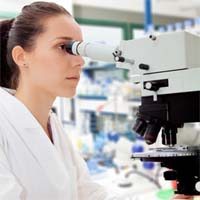Diagnosing Mesothelioma with Medical Thoracoscopy
 Medical thoracoscopy, a procedure used to diagnose and treat pleural diseases such as malignant pleural mesothelioma, provides the information needed to make a diagnosis in about 80 percent of patients. That is up by more than 20 percent in the last three decades.
Medical thoracoscopy, a procedure used to diagnose and treat pleural diseases such as malignant pleural mesothelioma, provides the information needed to make a diagnosis in about 80 percent of patients. That is up by more than 20 percent in the last three decades.
In a newly published study, a team of Italian pulmonary medicine specialists say the procedure, which is also known as pleuroscopy, has steadily improved as doctors have gotten more adept at using it to diagnose mesothelioma and other thoracic malignancies.
The Challenge of Mesothelioma Diagnosis
Pleural mesothelioma, a virulent cancer that starts on the membrane surrounding the lungs, is notoriously difficult to diagnose. The symptoms of mesothelioma, which can include cough, chest pain, fatigue and shortness of breath, are so similar to other illnesses, that the only way to accurately diagnose it is by examining mesothelioma cells under a microscope.
But it can be challenging to accurately locate a mesothelioma tumor and extract an adequate tissue sample for diagnosis. Thoracoscopy or pleuroscopy, which utilizes a specially designed camera called a thoracoscope to let the surgeon see inside the chest cavity, can improve mesothelioma diagnosis by making it easier to get enough of the right tissue.
Evaluating Medical Thoracoscopy
The new Italian study published in the Annals of Thoracic Medicine evaluated trends in the use of thoracoscopy in people with mesothelioma and other thoracic diseases.
The study included 2,752 patients who received medical thoracoscopy between 1984 and 2013 at Spedali Civili Hospital in Brescia, Italy. Cancers, including pleural mesothelioma and lung cancer, represented more than half of the diagnoses. Tuberculosis was the most common non-cancerous disease.
The researchers found that the overall likelihood that medical thoracoscopy would provide the information needed to accurately diagnose lung diseases such as mesothelioma increased from 57 percent to nearly 80 percent over the course of the study period. This likelihood is also called “diagnostic yield”.
“Medical thoracoscopy has a great diagnostic yield that can be improved by practice, permitting to achieve a specific histological diagnosis in about 80 percent of patients,” concludes study author Alberto Valsecchi, MD.
Dr. Valsecchi and his colleagues also found that careful patient selection is important in achieving the best results with medical thoracoscopy. Mesothelioma patients and others who had pleural effusion, or excessive lung fluid, had a greater diagnostic yield than patients without this fluid.
Source:
Valsecchi, A, et al, “Medical thoracoscopy: Analysis on diagnostic yield through 30 years of experience”, August 2016, Annals of Thoracic Medicine, pp. 177-182





